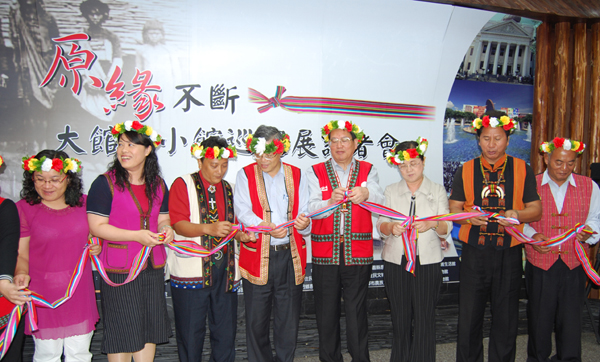ENGLISH ﹥﹥﹥
In 2008, National Museum of Prehistory respectively cooperated with Taitung Haiduan Bunun Museum and Hualien Shoufong Indigenous Museum to hold two exhibitions: "Taupas . Japanese Army Laborer - The Memory about Soldiers from South Pacific War" and "Reassemble over Oblivion -The Tragically Heroic Cikasuan Battle". Both focusing on local cultures and history of the tribes, these two exhibitions are parts of a cooperative project, "Ceaseless Indigenous Cultures: Museums Partnership", which is under "Local Indigenous Museums Activating Project", promoted by Council of Indigenous Peoples.
National Museum of Prehistory endeavors to develop the relationship with indigenous people all along. Early in 2006, we have started to cooperate with tribal communities to hold exhibitions. Through the process of curating exhibitions together, we shared our experience with local partners, and they also advanced their abilities of actually hatching exhibitions by themselves. It is the idea, "Walking Together", that National Museum of Prehistory holds to cooperate, learn, and keep company with the tribal communities and indigenous local museums.
There were two points that National Museum of Prehistory focused on in this project:
1) We discussed the theme with local culture and history researchers, curators of the indigenous local museums, and officers of county government. Then in preparatory state, we accompanied and offered training and consultation. We would like the local tribal curators to learn the substance of an exhibition by themselves through actual practice, and further, to cultivate themselves the abilities of developing concepts, and executing administrative matters independently in the future.
2) In the process of cooperating with local partners, we were able to learn the way to share the various fact of a museum to them, and they have a chance to know the work a museum does, and how important the museum-ization of tribes to the promotion of their cultures is. Step by step, we have been always trying to communicate and interact to the tribes around us, and looking forward to set up a vibrant relationship with indigenous communities.
The outcome of these cooperative exhibitions was exciting. Through the process, local partners understood that exhibitions could be so alive and intimate with them, and the importance of the exhibitions in promoting of their cultures as well. The curators of the indigenous local museums not only learned a lot through the process, but also developed profound partnership within the volunteers in their tribal communities, and started to conceive the idea of next exhibitions. And for their own elders, they saw the earnest attitude and presentation of their young generation succeeding their cultures, in another way, emotionally bound the seniors and the juniors together as they used to be long ago.

|